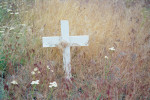Apr
28
2018

While I enjoy using rangefinder and point and shoot cameras there is no doubt for versatility its the SLR that wins. That’s why when I have the space and can spare the weight I like to bring along an SLR on trips. In this case the camera was the Pentax MZ6 one of the last film SLR’s produced by Pentax and full of all the features you need in a small light package.
I haven’t shot much of the Kodak Portra 160 mostly because it seems like an odd sensitivity. It has a Print grain index of 79 at a magnification ratio of 17.9 while Ektar is 66 and Portra 400 is 89. With only a marginal improvement in granularity over the Portra 400 it makes choosing it more about needing the slower ISO at which point the Ektar comes into play. Then the choice is more between their colour rendition the more punchy saturated Ektar vs the more muted skin tone friendly Portra.
no comments | posted in Photography, Processing, Uncategorized
Apr
22
2018

Different films often say ‘load film in subdued light’ but few of them require it to the degree that Rollei CN200 does. Each roll that I have shot so far has had ‘unwanted’ light strike the film while it is inside the canister. I placed unwanted in quotes because I could have been more careful to prevent it if it really mattered to me more. I like the randomness that can occur. What appears to happen is that the tang of the film leader sticking out of the canister works like a light pipe allowing the film to transfer light from outside to inside. The most clear evidence of this is the way that the first 12″ or so of the film is exposed to sunlight in a diminishing fashion.

The reason that this may occur with CN200 is it is an unmasked film. Unlike most negative colour films it does not have the same orange brown color mask but its base is clear as you would see with slide film. An interesting side effect of the lack of the normal C41 mask is that the film can be optically printed with Black and White paper the same as normal Black and White film. A quick check on the Internet as of January 2018 and this film is not available through any retailers I can locate which is a shame. Posts that actually talk about the Yashica Electro GX can be found by a search of my blog here “Yashica GX”
no comments | posted in Photography, Processing
Apr
15
2018

The Canon Elan 7ne has a very interesting feature. It can select from its seven focus points by determining where the photographer is looking. If your thinking in terms of modern facial recognition through processing stop right there. It uses a more intrusive system of shining an infrared beam into your eye and using the resulting reflection to compare it to a sort of look up map you create during calibration of the system. That’s why it works best if you make sure to delete any previous calibrations before trying to use it. If you do calibrate the system it works quite well but feels awkward to look at the focus point you want. I think that may be because normally you try to take in the entire scene in the viewfinder not concentrate on one tiny spot. The procedure for calibrating is a little involved so I will leave that to the manual, though it can be turned on and off easily with a switch on the top of the camera. 

The focus points are all near the center so for a lot of instances they will all cover the main subject which defeats the purpose of being able to select a focus point by looking at it.

The Elan 7ne was released in 2000 around the same time as the Canon 1D  a 4mpixel digital SLR and although they continued to release some Small plastic ‘Rebel’ SLR’s for a few years this was pretty much the end of the line for film camera innovation as their attention turned fully to digital.
a 4mpixel digital SLR and although they continued to release some Small plastic ‘Rebel’ SLR’s for a few years this was pretty much the end of the line for film camera innovation as their attention turned fully to digital.

1 comment | posted in Cameras, Photography




























































